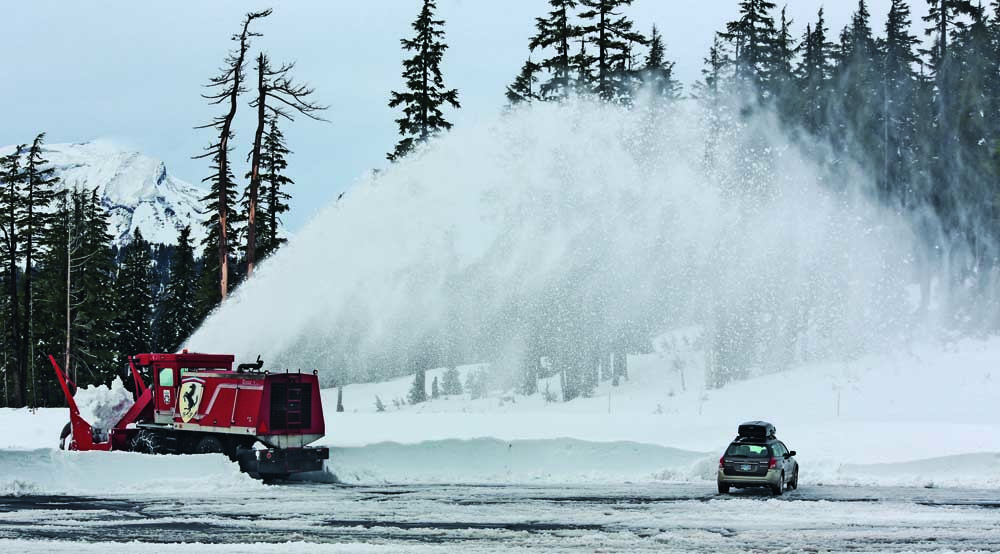Weekend storms get 2020 water year off to healthy start, but drought conditions remain
Published 4:30 pm Monday, November 16, 2020

- Dean Guernsey/For The BulletinRyan Gage, director of base operations at Mt. Bachelor ski area, operates a snowplow while clearing the parking lot at the West Village Lodge.
Central Oregon’s first big winter storm left the mountaintops covered in snow and Bend soaked with rain. The storm was also a welcome sight for the area’s agricultural community, which is suffering from drought conditions.
Bend received a half-inch to 0.85 inches of rain over a 72-hour period from Friday morning to Monday morning, according to Brandon Lawhorn, a meteorologist for the National Weather Service in Pendleton.
The Cascades in Central Oregon received 3.5 inches of liquid equivalent, which is about 35 inches of snow, said Lawhorn. La Pine saw 8 inches of snowfall. Mt. Bachelor ski area received 45-50 inches of snow during a 72-hour period, according to Leigh Capozzi, brand and marketing director at Mt. Bachelor.
Bend has already surpassed the precipitation total for all of November 2019. The city has received 1.81 total inches of rain this November, compared to 0.66 inches this month a year ago, according to the National Weather Service.
Redmond is at 143% of average for the water year, which started Oct. 1, and Bend is 144%, according to data from Larry O’Neill, an associate professor at Oregon State University’s College of Earth, Ocean, and Atmospheric Sciences.
While the rain is a welcome sight, O’Neill warns that Central Oregon still has a long way to go to escape drought.
“The recent rains have slightly improved drought conditions in the short term,” said O’Neill. “What this means practically is that this rain did not completely improve the precipitation deficits we’ve run over the past year, so the region around Deschutes County will remain in mostly severe drought for now.”
According to the U.S. Drought Monitor, around two-thirds of Deschutes and Jefferson counties are in drought, while all of Crook County is in drought. The last water year, October 2019 to September 2020, was the 10th driest on record, said O’Neill.
Central Oregon desperately needs a strong winter if it hopes to refill Wickiup Reservoir, which completely emptied in September. In a typical year, the reservoir will only fill to capacity if it ends the irrigation season 25% full.
The reservoir — which has been filling since October with groundwater and flow from the Deschutes River — is currently 16% full.
Due to the volcanic soils in Central Oregon, the reservoir receives little run-off from storms. Most of the rainfall sinks into the ground and slowly trickles into the area’s rivers, lakes and reservoirs.
O’Neill said it’s not clear how the coming months will play out, calling this a “wait-and-see mode” to determine if the recent rains were an isolated event or a return to more typical conditions.
“We will need sustained normal to above-normal precipitation in Central Oregon and snowfall in the Cascades for the drought to subside substantially,” said O’Neill. “Central Oregon is still on the long road to drought recovery.”





